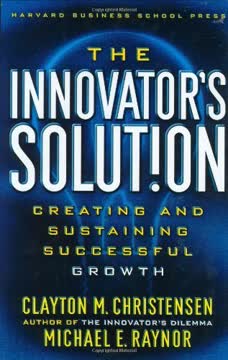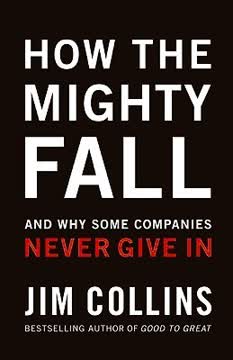重点摘要
1. 沟通中的小变化可以显著提高说服力
“对我们的信息进行小而简单的调整可以使其大大增加说服力。”
细微调整很重要。 简单地调整我们提出请求或呈现信息的方式,可以显著增强其说服力。例如:
- 在提出请求时使用“因为”这个词,即使后面跟着一个显而易见的理由,也能增加顺从性
- 个性化信息,例如在便签上添加手写笔记,可以提高响应率
- 逐字重复顾客的订单可以增加服务员的小费
语言选择至关重要。 我们使用的具体词语和短语可以决定我们的说服尝试是成功还是失败:
- 将选项框定为潜在损失而不是收益,通常更能有效地激发行动
- 使用押韵可以使陈述看起来更准确和真实
- 强调稀缺性或独特性可以增加感知价值和需求
2. 社会认同是人类行为的强大影响因素
“当人们对某个行动不确定时,他们往往会向外看,向周围的人寻求指导。”
我们跟随人群。 人类有一种自然倾向,在模糊的情况下会向他人寻求行为线索。这种社会认同原则可以被道德地利用来鼓励积极行为:
- 强调大多数人从事某种期望行为(例如,重复使用酒店毛巾)可以增加顺从性
- 展示类似个体或同龄人的推荐可以增强营销信息的效果
- 展示产品或服务的受欢迎程度或高需求可以促进销售
警惕负面社会认同。 有时,强调广泛存在的不良行为可能会适得其反,使其正常化。相反:
- 关注积极趋势或最成功个体的行为
- 使用“动态规范”展示行为如何随时间变化
3. 稀缺性和损失厌恶驱动决策
“人们对可能的损失比对可能的收益更敏感。”
害怕错过激励行动。 稀缺性原则表明,当某物稀少或供应减少时,人们会更重视它。这可以在各种情境中应用:
- 限时优惠或独家交易可以推动销售
- 强调产品的独特功能或优势可以增加其感知价值
- 将决策框定为可能失去的东西而不是获得的东西通常有更强的影响
损失厌恶是强大的。 人们通常更倾向于避免损失而不是获得等值的收益。这种心理倾向可以被道德地利用:
- 强调不采取行动的潜在损失,而不仅仅是行动的好处
- 将节约成本措施框定为“损失的钱”而不是“节省的钱”
- 强调不采取行动可能错过的独特机会
4. 互惠创造义务感并影响顺从
“互惠规范使我们有义务回报他人给予我们的东西。”
给予以获得。 互惠原则表明,人们感到有义务回报他人的好意、礼物或善意。这可以成为建立关系和影响行为的强大工具:
- 提供免费样品或有价值的信息可以增加销售和客户忠诚度
- 提供意外或个性化的善意举动可以加强业务关系
- 小的好意或让步可以导致更大的承诺
时机和个性化很重要。 互惠的效果可以通过以下方式增强:
- 先给予,不期望立即回报
- 使举动感觉意外和真诚
- 根据接受者的兴趣或需求量身定制礼物或好意
5. 与先前承诺的一致性塑造未来行为
“人们有一种自然倾向,与他们预先存在的态度、声明、价值观和行为保持一致。”
利用过去的行为。 一旦人们做出承诺,他们更有可能为了保持一致性而完成相关行动。这一原则可以通过多种方式应用:
- 在提出更大请求之前先提出小的承诺(登门槛技术)
- 在提出请求时提醒人们他们过去的行为或声明的价值观
- 鼓励公开或书面的承诺以增加执行力
从小开始逐步建立。 可以逐步利用一致性的力量:
- 从简单、容易同意的声明或行动开始
- 随着时间的推移逐步增加承诺的程度
- 以过去的顺从为基础提出未来的请求
6. 个性化和相似性增强说服效果
“我们最有可能跟随与我们有共同特征的人,例如价值观、信仰、年龄和性别。”
相似吸引相似。 人们更容易受到他们认为与自己相似的人的影响。这一原则可以在各种说服情境中应用:
- 定制信息以突出共同特征或经历
- 使用展示与目标受众相似的个体的推荐或案例研究
- 强调共同的目标、价值观或挑战
个性化提升影响力。 根据个人偏好和需求定制沟通和优惠可以增加其效果:
- 在适当的时候使用人名并引用个人细节
- 对受众进行细分并针对特定群体定制信息
- 根据过去的行为或声明的偏好提供个性化推荐
7. 时机和情境显著影响说服结果
“你首先体验到的东西决定了你对接下来体验的东西的感知。”
时机至关重要。 说服尝试的效果可能因其传递的时间和方式而大不相同:
- 考虑接受者的情绪状态和疲劳程度
- 通过先呈现不太有利的选项来利用对比效应
- 利用自然的决策点或过渡期
情境塑造感知。 说服尝试的环境和周围情况可以极大地影响其成功:
- 使用物理线索(例如背景图像)来引导期望的联想
- 考虑互动的更广泛背景(例如文化规范、当前事件)
- 将请求与相关的参考点或锚点联系起来
8. 道德影响建立长期信任和关系
“然而,当这些工具被不道德地用作武器时——例如,通过不诚实或人为地将社会影响原则引入不自然存在的情境中——短期收益几乎总是会被长期损失所取代。”
诚实有回报。 虽然不道德的说服策略可能带来短期收益,但它们最终会损害关系和声誉。道德影响关注:
- 提供准确的信息和真实的价值
- 尊重被影响者的自主权和福祉
- 建立长期信任和互利关系
透明度建立信任。 对说服尝试保持开放反而可以使其更有效:
- 承认潜在的偏见或利益冲突
- 提供平衡的信息,包括潜在的缺点
- 允许人们在没有不当压力的情况下做出知情决定
9. 文化差异影响全球背景下的说服策略
“尽管社会影响的基本原则和我们在本书中讨论的许多策略在所有文化中都是强大的说服者,但最近的研究表明,在根据你试图说服的人的文化背景调整策略和信息时,存在一些细微差别。”
一刀切并不适用。 在一个文化背景下有效的说服策略在另一个文化背景下可能效果较差甚至适得其反。需要考虑的关键文化维度包括:
- 个人主义与集体主义
- 权力距离
- 不确定性规避
- 长期与短期导向
调整你的方法。 为了在跨文化中有效:
- 研究并尊重当地习俗、价值观和沟通风格
- 考虑文化因素如何影响对信息的解读
- 准备根据文化背景调整你的说服策略
人类行为虽然复杂,但遵循可预测的模式。理解并道德地应用说服原则可以显著增强我们影响他人的能力并创造积极的结果。通过专注于建立真实的关系、提供价值和尊重文化差异,我们可以在日益互联的世界中成为更有效的沟通者和领导者。
最后更新日期:
FAQ
What's "Yes!: 50 Secrets from the Science of Persuasion" about?
- Overview: "Yes!: 50 Secrets from the Science of Persuasion" by Noah J. Goldstein, Steve J. Martin, and Robert B. Cialdini explores scientifically-backed strategies to enhance persuasion skills.
- Content Structure: The book is divided into 50 chapters, each revealing a unique persuasion technique supported by research and real-world examples.
- Purpose: It aims to provide readers with practical tools to influence others ethically and effectively in various contexts, from business to personal interactions.
- Authors' Expertise: The authors are renowned experts in psychology and marketing, bringing credibility and depth to the insights shared.
Why should I read "Yes!: 50 Secrets from the Science of Persuasion"?
- Practical Application: The book offers actionable strategies that can be applied in everyday situations to improve communication and influence.
- Scientific Foundation: Each technique is grounded in rigorous psychological research, ensuring reliability and effectiveness.
- Broad Relevance: Whether you're a business professional, educator, or simply looking to improve personal relationships, the book provides valuable insights.
- Ethical Persuasion: It emphasizes ethical influence, helping readers achieve positive outcomes without manipulation.
What are the key takeaways of "Yes!: 50 Secrets from the Science of Persuasion"?
- Small Changes, Big Impact: Minor adjustments in communication can significantly enhance persuasiveness.
- Social Proof: People are influenced by the actions of others, making social proof a powerful tool in persuasion.
- Reciprocity Principle: Offering something first can create a sense of obligation in others to reciprocate.
- Consistency and Commitment: People prefer to act consistently with their commitments and values, which can be leveraged to gain compliance.
How does "Yes!: 50 Secrets from the Science of Persuasion" define the principle of social proof?
- Definition: Social proof is the psychological phenomenon where people mimic the actions of others in an attempt to reflect correct behavior.
- Application: The book illustrates how highlighting the popularity of a behavior or product can increase its adoption.
- Research Example: Studies show that informing hotel guests that most others reuse towels significantly increases towel reuse rates.
- Practical Tip: Use testimonials and case studies to demonstrate widespread approval and encourage similar behavior.
What is the "foot-in-the-door" technique discussed in "Yes!: 50 Secrets from the Science of Persuasion"?
- Technique Explanation: The "foot-in-the-door" technique involves making a small request first to increase the likelihood of agreement to a larger request later.
- Psychological Basis: Agreeing to a small request creates a sense of commitment, making individuals more likely to comply with subsequent larger requests.
- Research Insight: The book cites studies where initial small commitments led to significantly higher compliance with larger requests.
- Practical Use: This technique can be applied in sales, negotiations, and even personal requests to gradually build agreement.
How does "Yes!: 50 Secrets from the Science of Persuasion" suggest using scarcity to influence others?
- Scarcity Principle: People value things more when they perceive them as scarce or limited in availability.
- Psychological Impact: Scarcity creates a sense of urgency and exclusivity, prompting quicker decision-making.
- Real-World Example: The book discusses how limited-time offers and exclusive deals can drive consumer behavior.
- Ethical Consideration: While effective, the book advises using scarcity ethically to avoid manipulation and maintain trust.
What are some of the best quotes from "Yes!: 50 Secrets from the Science of Persuasion" and what do they mean?
- "Small changes can make a big difference." This highlights the book's core message that minor adjustments in approach can significantly enhance persuasion.
- "People follow the lead of similar others." Emphasizes the power of social proof and the influence of peer behavior on decision-making.
- "Reciprocity is the social glue that binds us." Underlines the importance of giving first to create a sense of obligation and cooperation.
- "Consistency is the hobgoblin of little minds." Suggests that while consistency is powerful, it should not lead to inflexibility or closed-mindedness.
How does "Yes!: 50 Secrets from the Science of Persuasion" address the use of authority in persuasion?
- Authority Principle: People tend to follow the lead of credible, knowledgeable experts.
- Application: The book advises leveraging authority by highlighting credentials and expertise to enhance persuasiveness.
- Research Support: Studies show that perceived authority can significantly increase compliance and trust.
- Practical Tip: Use endorsements, certifications, and expert opinions to establish authority and influence decisions.
What is the "labeling technique" in "Yes!: 50 Secrets from the Science of Persuasion"?
- Technique Overview: The labeling technique involves assigning a positive label to someone to encourage behavior consistent with that label.
- Psychological Mechanism: People strive to act in ways that align with how they are labeled, reinforcing the desired behavior.
- Research Example: The book cites studies where labeling individuals as "above-average citizens" increased their likelihood of voting.
- Practical Application: Use positive labels in feedback and encouragement to motivate desired actions in others.
How does "Yes!: 50 Secrets from the Science of Persuasion" suggest handling objections in persuasion?
- Acknowledge and Reframe: The book advises acknowledging objections and reframing them to highlight positive aspects.
- Two-Sided Messages: Presenting both pros and cons can increase credibility and trustworthiness.
- Research Insight: Studies show that addressing weaknesses upfront can make strengths more persuasive.
- Practical Use: Use this approach in negotiations and presentations to build trust and address concerns effectively.
What role does emotion play in persuasion according to "Yes!: 50 Secrets from the Science of Persuasion"?
- Emotional Influence: Emotions can significantly impact decision-making and receptiveness to persuasion.
- Research Findings: The book discusses studies showing how emotional states can alter perceptions and responses.
- Practical Tip: Tailor messages to resonate emotionally with the audience for greater impact.
- Caution: Be mindful of the ethical implications of using emotions in persuasion to avoid manipulation.
How can "Yes!: 50 Secrets from the Science of Persuasion" help improve negotiation skills?
- Preparation and Strategy: The book provides strategies for setting the stage for successful negotiations, such as building rapport and using social proof.
- Consistency and Commitment: Leveraging past commitments can strengthen negotiation positions and encourage agreement.
- Authority and Expertise: Highlighting expertise can enhance credibility and influence in negotiations.
- Practical Examples: The book offers real-world scenarios and research-backed techniques to apply in various negotiation contexts.
评论
《Yes!: 50种科学证明的说服方法》收到了褒贬不一的评价。许多读者认为这本书内容丰富且实用,赞扬其简洁的格式和现实应用。一些人欣赏书中所展示的说服技巧的科学基础。然而,批评者认为这本书缺乏深度和原创性,尤其是与Cialdini之前的作品相比。一些人觉得写作风格乏味或重复。总体而言,读者重视这本书对人类行为和说服策略的见解,尽管对其作为独立资源的有效性看法不一。
Similar Books











